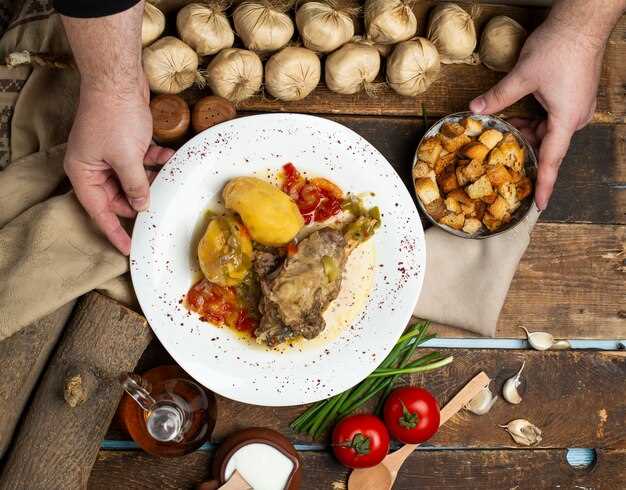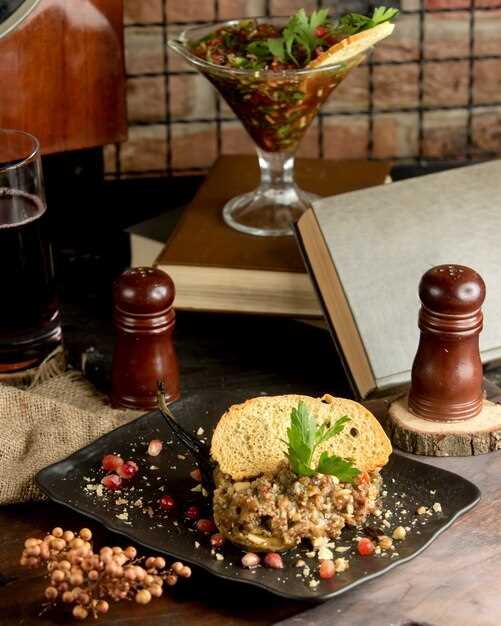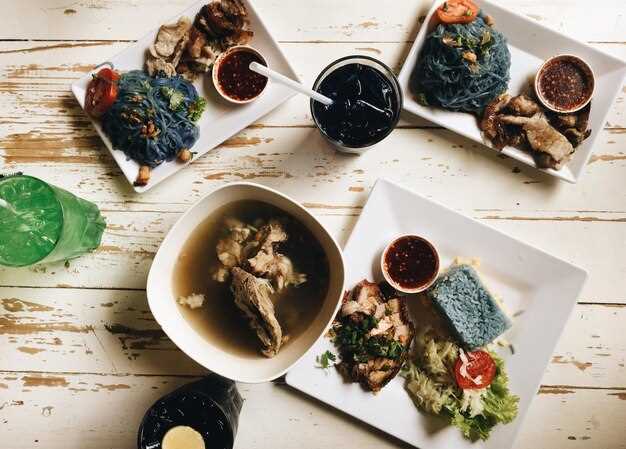
Begin with kasnudeln at naschmarkt for a precise taste of Austria. Walk the night aisles, visit various shops, and theyre filled with herbs, cheeses, and potatoes. The meaning of comfort food here becomes clear before you move on to other plates, and you’ll notice a variety of styles that set the tone for the rest of your list.
Wiener Schnitzel comes crisp and light, often prepared with veal or pork. It lands on a plate with lemon juice, potato salad, or cabbage. Drink a glass of Grüner Veltliner or a cold beer to balance the richness. In many places, the scent drifts from the pan as guests went straight from work to the table, and a giant dining room can feel like a warm welcome after a long day, and travelers who have traveled from nearby towns often join the lines.
Tafelspitz offers a refined alternative, with slow-boiled beef, root vegetables, and a horseradish sauce. The meat becomes tender and is commonly served with potato rösti or a fresh herb sauce. It comes with a light broth that carries the kitchen’s best memories, and many shops near the center swear this dish has become a staple at many places after work. Add a drink of wine to emphasize the depth.
Kaiserschmarrn and Apfelstrudel close the meal with iconic pastries. Kaiserschmarrn offers fluffy, caramelized bits sprinkled with sugar and a small tris of raisins; Apfelstrudel wraps tart apples in a flaky pastry and a cinnamon whisper. You’ll find both on the menus of Vienna cafés near naschmarkt, pairing well with a strong coffee or a late-night tea.
Plan a one-day route to taste all five: kasnudeln at naschmarkt, Wiener Schnitzel at a classic bistro, Tafelspitz at a cellar restaurant, and Kaiserschmarrn with Apfelstrudel in a pastry shop. Walk between venues with your team, enjoy a variety of textures and aromas, and raise a toast with a local drink to celebrate the night. The place keeps evolving as you go, but the core flavors stay the same.
Austrian Cuisine Quick Guide

Visit Vienna first for a Wiener Schnitzel, crisp and golden, with a lemon wedge, parsley potatoes, and sauerkraut on the side. This classic sets the tone for your tasting, showing how a simple breaded cutlet can shine.
This compact guide highlights five must-try dishes that capture Austria’s comforting flavors, regional flair, and the way people enjoy meals together.
-
Wiener Schnitzel – a thin cutlet of veal (or pork) breaded and fried to a light, crispy crust. Usually served with potato salad or mashed potatoes, a lemon wedge, and a garnish of parsley; sauerkraut is a popular close-side option. Delicious and reliably satisfying.
-
Tafelspitz – boiled beef served with root vegetables and a trio of sauces: apple-horseradish and chive cream, plus horseradish tang. Pair with bread dumplings (Semmelknödel) or mashed potatoes for a wholesome combination that highlights the meat’s aroma.
-
Sachertorte – the original Vienna chocolate cake, split with a thin apricot jam layer and finished with a dark glaze. Typically enjoyed with whipped cream; this dessert is a delicious chocolate moment and a must-try for chocolate lovers.
-
Kaiserschmarrn – an omelet-style pancake torn into chunks, caramelized and sprinkled with sugar. Often served with plum or apple sauce; in many places you’ll find a giant shareable portion that makes for a playful treat or afternoon pick-me-up.
-
Apfelstrudel – thin pastry wrapped around apple fillings with raisins, cinnamon, and a touch of lemon zest; served warm with vanilla sauce or cream. The fillings stay juicy and the pastry stays crisp, a classic that travels well beyond the bakery window.
Notes: you can find stuffed peppers on seasonal menus, and ribs with sauerkraut appear in some border inns. Semmelknödel (bread dumplings) offer a satisfying alternative to mashed potatoes, especially with meat dishes. For a smooth plan, talk with locals and fellow travelers; people in alpine towns along the beautiful slope share tips on where to eat. This content helps you map a close, tasty circuit, and hungary influences surface in paprika notes across some menus. Once you finish, most visitors agree that the combination of delicate pastry, bold meat, and fruity fillings makes each bite delicious and memorable. If you want a further recommendation, ask for a close table near the window to watch the street life while you savor the next bite.
Krautfleckerl spotlight: ingredients, technique, and serving tips
Cook Krautfleckerl with a thick, glossy cabbage base and melt mondseer into the pasta for a traditional Austrian finish.
Ingredients
- Fleckerl pasta (or small egg noodles), 250 g
- Shredded cabbage (savoy or green), 500 g
- One medium onion, finely chopped
- Butter or lard for frying
- Sweet paprika, 1–2 tsp
- Caraway seeds, 1/2 tsp
- Salt and freshly ground pepper
- Mondseer cheese, grated, 80–120 g
- Sour cream (optional), 2–3 tbsp
- Schnapps (optional) for deglazing
- Sugar pinch to balance acidity
- Parsley, chopped, for garnish
- Potatoes or a simple green salad as a side
- Germknödel (for dessert, optional)
- Dark chocolate square (optional pairing)
Technique
- Boil fleckerl in salted water until al dente, then drain and set aside.
- In a large pan, melt butter; sauté onion until translucent and lightly golden.
- Add shredded cabbage, salt, and a pinch of sugar; cover and cook until softened but still a bit crunchy, about 6–8 minutes.
- Stir in paprika and caraway; cook one minute to bloom the spices, then deglaze with a splash of schnapps if using.
- Fold the pasta into the cabbage, toss over medium heat until well coated, and remove from heat so the cheese can melt smoothly.
- Sprinkle grated mondseer over the hot mix and stir gently by hand to create a thick, glossy coating.
- Adjust seasoning, taste for balance, and keep warm until ready to serve.
Serving tips
- Plate hot with a sprinkle of parsley and an extra grind of pepper; a side of boiled potatoes enhances the traditional feel.
- Pair with a small glass of schnapps or a hearty Austrian beer for contrast; some travelers enjoy a spoonful of sour cream on top for richness.
- For a gentle finish, offer germknödel as dessert and a sliver of dark chocolate for chocolate lovers.
- If you want to explore variations, know that the dish can originate in different Austrian towns, with editors recommending careful balance between cabbage sweetness and cheese depth; share these notes with neighbors to compare subtle regional twists.
- Leftovers reheat well in a skillet, stirring in a touch more sour cream to restore gloss; this makes a ready-to-serve second round for travelers and friends.
источник notes that Krautfleckerl remained a practical, hand-made staple in Austrian households, a dish travelers could prepare with pantry staples after a long day in the town and its slopes. It’s right for a simple weeknight editorial piece or a cozy Sunday meal–austrian by heart, warmly shared from one kitchen to another. If you want to know more, recommend trying a variant with potatoes mashed into the cabbage for a thicker texture, and don’t hesitate to share your version with the neighborhood readers.
Wiener Schnitzel basics: veal vs pork, breading, and frying method
Choose veal for authenticity; pork is a really common substitute, but this usually yields a denser crust and a less tender bite. Pound the cutlet to about 3-4 mm thick and trim edges so the meat cooks evenly. These things help the schnitzel stay juicy as the crust browns. A well-made cutlet remains filling, crisp, and still a favorite in many Austrian homes.
Set up a simple breading station: flour seasoned with a touch of salt, an egg wash, and breadcrumbs (Semmelbrösel). Dredge the veal in flour, dip in egg, then press crumbs on until the coating forms a thin, even crust that clings during frying. For extra crispness you can incorporate a small amount of panko, but keep the layer light so the meat stays tender and the crust doesn’t feel heavy.
Fry in clarified butter (Butterschmalz) or a neutral oil, preheated to 170-180°C. Fry each cutlet 2-3 minutes per side until the crust is golden and the meat shows no pink near the center. Let the schnitzel rest 1-2 minutes on a rack or paper to drain excess fat; this keeps the crust crisp and avoids limpness.
Serve with a lemon wedge, mashed potatoes or potato salad, and a simple greens salad. This classic still serves as a must-eat centerpiece of a Vienna night or winter dinner, and it’s a real example of Austrian comfort food. If you pair it with rindsgulasch or another winter dish, you get a satisfying balance that works after a long walk or a day of skiing. The combination remains a favorite that many people seek for its amazing balance of texture and flavor.
For variety, pork versions stay crisper when chilled briefly and reheated, though veal keeps its tenderness better. Both options benefit from consistent frying fat, careful temperature and a light hand with breadcrumbs. A touch of hungarian paprika in a light sauce on the side can add color without overpowering the schnitzel, making an amazing pairing. Some cooks even add shredded lemon zest or herbs to the crumbs for a small brightness boost; these tweaks were developed by home cooks and chefs who want to invent new takes while preserving the core experience.
In many households, pastries follow the meal, and the overall experience becomes a compact, comforting ritual. covid-era memories show how this really simple dish could anchor evenings; guests walk home with warm memories of the night, the dish, and the cozy kitchen. This example of Austrian cooking highlights how a single, well-made schnitzel can satisfy guests with its crispy crust, juicy interior, and clean finish.
Tafelspitz basics: choosing cuts, simmering process, and sauce pairings
Choose a center-cut top round for traditional Tafelspitz; this cut is meant for slow simmering and yields tender, evenly sliced portions that shine at the center of the plate.
First, what you want is a 1.5–2.5 kg piece with a modest fat cap and pretty even grain. Keep the roast tied so the center stays compact and the meat cooks evenly until the last slice. This will cook neatly, and you cook the rest of the meal around it.
In a large pot, cover with cold water by about 2 cm, bring to a bare simmer, then lower the heat to maintain a gentle bubble. Skim foam, add mirepoix (onion, carrot, celery) and bay leaves with peppercorns. Cook 2.5–3 hours for a piece in this range; cook until a fork moves through easily, then rest the meat before carving. The stock will stay flavored by the aromatics and can be strained for sauce or soup, a huge bonus you can use for dumplings or vegetables while you relax.
Sauce pairings: the classic is apple-horseradish (Apfel-Kren) or a smooth horseradish sauce; a light Kräutersauce also works. The combination should flavor the bite without masking the beef; a wine that cuts the richness helps–Grüner Veltliner or Riesling are reliable. theyre popular with national cuisine fans and guests alike, and sure to please. Many diners were impressed.
Side ideas: serve with boiled potatoes, mashed potatoes, or dumplings, plus a crusty brot on the side. If you want to indulge, try mashed potatoes with a touch of cheese for a richer contrast. The sauce should be served away from the meat to keep the flavors clean; youve seen how this approach travels well in social dinners. The covid era reminded households of the источник of this technique, rooted in Austrian national tradition, and the method will keep you cooking, tasting, and eaten with pride. If you liked this guide, you might try it this weekend; you will see how easy it is to cook traditional dishes that were eaten with pride, and the center keeps shining on every plate.
Sachertorte mastery: true chocolate ganache, layering, and serving with whipped cream

Typically, temper 200 g dark chocolate (70%) with 150 ml heavy cream, then whisk to a smooth ganache and cool to about 32°C. This yields a thick, glossy coat that clings to the cake and holds up in many restaurants. The result will pronounce itself as the vienna signature of a Sachertorte.
Slice the cooled sponge into two thin discs. Spread a layer of warm apricot jam on the bottom disc, then pour a generous ganache between the layers. Set briefly in a cool spot, then apply a second, thinner ganache coat to seal and smooth the surface. This method keeps the sponge moist and creates distinct, even layers you can see when you cut open-faced slices.
Serve with fresh whipped cream on the side. The classic viennese way is a small heap of whipped cream on the plate, together with the open-faced slice resting beside it; the cream should be soft, not stiff, so every bite glides. A good bite should melt on the tooth, leaving a balanced chocolate finish that lingers without cloying sweetness.
At naschmarkt in vienna you can source best ingredients, from fresh cream to high-quality chocolate. Looking for variations? Some bakers use a barely thicker outer glaze, others go with a glossy finish that catches light differently. Consider this as insurance against a dry cake: weigh the layers, chill properly, and store wrapped for up to 3 days in a cool place. This approach gives you a little consistency across kitchens and helps you recreate an amazing result, whether you’re cooking for family, sharing with friends, or opening a small dessert program in a restaurant. For social sharing, post the links to your process, and you’ll notice many diners pronounce this cake as a treat and a symbol of traditional Austrian pastry. In vienna’s dining culture, looking at savory neighbors–fried schnitzel with horseradish and dumplings with parsley–highlights how a dessert can stand apart yet feel connected to the table experience.
Apfelstrudel secrets: dough handling, apple filling options, and best accompaniments
Start with a rested dough: this lets you roll it to almost translucent, and it doesnt tear easily when you slide it onto the cloth. This lets you bake a beautiful, paper-thin sheet that holds up to the fruit filling.
Dough handling matters: choose pastry flour or 00, mix with warm water, a splash of oil, and a pinch of salt, then knead briefly until smooth. Cover with a clean towel and let rest 20–30 minutes. The dough should be elastic but not sticky; these techniques originate in classic Viennese pastry methods and relate to regional habits across Austria. When you roll, dust lightly with flour, keep the surface cool, and use the towel to gently pull the sheet into a wide rectangle, moving slowly so it remains intact. Peppa would approve this cozy, shareable approach.
Filling options center on apples: use apples from nearby regions for depth and texture, peeled, cored, and cut into chunks. The classic mix combines apples with sugar, lemon zest, and cinnamon; fold in a handful of breadcrumbs or crushed cookies to absorb excess juice, helping the filling stay near the center rather than seeping into the pastry. The flavors originate from a simple fruit base, but you can tailor sweetness with the type of apples (tart varieties balance richness) and add a splash of vanilla. If you like extra texture, mix in dried fruit or a few apricot pieces for a beautiful contrast. The flavors originate from a handful of ingredients and still feel comforting and traditional, even in countries where similar sweets appear in classical menus.
Options to vary without losing the core vibe: substitute pears or mix apples with raisins; try a dash of almond meal for a richer bite; some kitchens even explore savory notes by caramelizing a tiny onion alongside the apples, then balancing with sugar to keep the dish traditional at heart. In neighboring countries you might also encounter spinatknödel or leberknödel adaptations in broader menus, but for Apfelstrudel the main focus remains fruit, spice, and a crisp pastry shell. Liked by many home cooks, these variations keep the dish approachable while staying clearly traditional.
Best accompaniments elevate the finish: vanilla cream or a light whipped cream, a warm apricot glaze brushed on the baked strudel, and a dusting of powdered sugar. A small scoop of vanilla ice cream or a spoon of sweet custard close the contrast between hot pastry and cool topping; these choices are trustworthy and better when shared with friends and family. The pastry remains rich and comforting, while the accompaniments provide a creamy balance that highlights the fruit and crust.
| Aspect | Tips |
|---|---|
| Dough handling | Rest 20–30 mins; roll thin; flour-dusted surface; keep cool; slide onto a towel and transfer gently |
| Filling options | Classic: apples + sugar + lemon zest + cinnamon; breadcrumbs or cookies to absorb moisture; add raisins or dried fruit for depth |
| Best accompaniments | Vanilla cream or whipped cream; apricot glaze; dust with sugar; warmed butter or ice cream for contrast |
